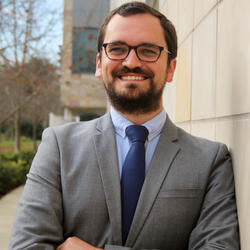The Colorado Plateau is unique for its diversity of native plant species, but its ecosystems are under threat: from land-use practices both past and present, as well as the encroaching threat of climate change. Can the solution come from within the Plateau itself?
Here, Science Moab speaks with Daniel Winkler, a research ecologist and co-science lead for the Colorado Plateau Native Plant Program, about how programs like the plant program and “Seeds of Success” are galvanizing land-management agencies and nonprofit partners to collect and share native seeds for research and restoration.
Science Moab: What’s so special about native plants on the Colorado Plateau?
Winkler: About 15% of the species here are native and endemic to the Colorado Plateau, ‘endemic’ meaning the plants are found nowhere else. Some estimates indicate the area has the highest rate of endemism in the United States, second only to places like California where 30% of flora is native and endemic.
Science Moab: Why does the Colorado Plateau have such high levels of endemism?
Winkler: The Colorado Plateau exists in this interesting climate space between coastal California, the Great Basin and the Rocky Mountains. So the species native to the Plateau have evolved over thousands of years to deal with very unique environmental factors that allow them to persist here. This also explains why, if we tried bringing a plant from somewhere else, it would be quite challenging for it to thrive if it didn’t naturally occur here.
Science Moab: How are these native species doing?
Winkler: There are many unknowns, which is why a lot of people are investing time and research dollars into studying native plants to figure out as much as we can right now. We do know that the Colorado Plateau is predicted to become hotter and drier in future years. A big thing that motivates me is the restoration of lands that have already been degraded from years of grazing, mineral extraction and various other human activities.
Science Moab: You mentioned climate change, but are there other current threats to native plant diversity and abundance?
Winkler: Absolutely. The federal government’s effort to achieve American energy independence by harvesting and extracting resources like uranium, coal and natural gas from American public lands created a number of human impacts that will be ongoing for generations to come. Those include the oil and gas industry as well as livestock grazing, which has serious impacts on the native plant communities we care about. Even recreational tourism has impacts on native plant communities. So every human is involved in the problem, as long as we’re living on the Colorado Plateau.
Science Moab: How are programs like “Seeds of Success” working to restore the native plant communities of the Colorado Plateau?
Winkler: Scientists have identified that local native plants tend to do better when trying to restore a given area. This could be a small patch of land on the side of the highway or an entire landscape—or, hopefully, one day the entire Colorado Plateau. The best plants to actively restore a degraded area are the plants that occurred there before or occur on the periphery of the damaged area. So there’s been a big push to identify native plant seed sources, harvest those, and grow them out. That way, we have enough seeds for large-scale restoration and can actively restore degraded areas.
At the same time, we’re considering the idea that local might not always be better—the caveat being that climate change might make currently-local species no longer thrive locally. Some researchers are supporting “pre-storation,” in which you identify species to restore an area before that area needs to be restored. The idea that Moab might become hotter and drier means that we might need to start identifying seed sources in areas that are currently hotter and drier and that have more resilient genetics that will allow them to survive and thrive in future climates.
Science Moab is a nonprofit dedicated to engaging community members and visitors with the science happening in Southeast Utah and the Colorado Plateau. This interview has been edited for length and clarity. To learn more and listen to the rest of Daniel Winkler’s interview, visit sciencemoab.org/seed-restoration.




